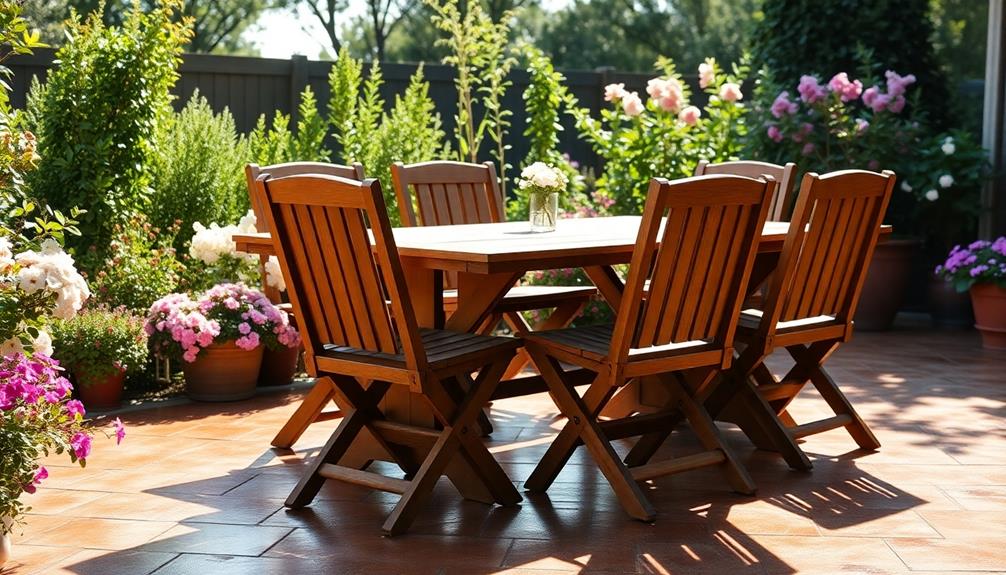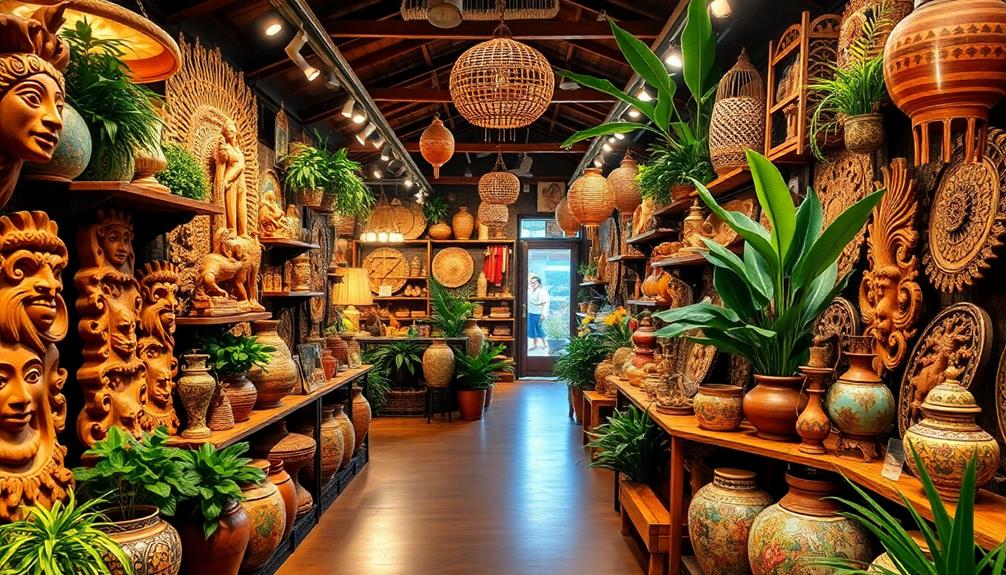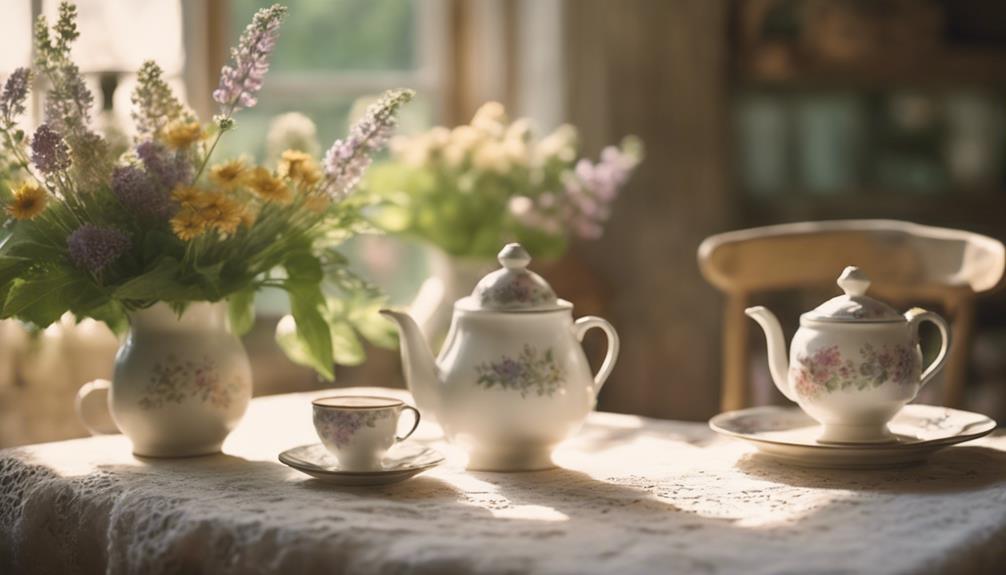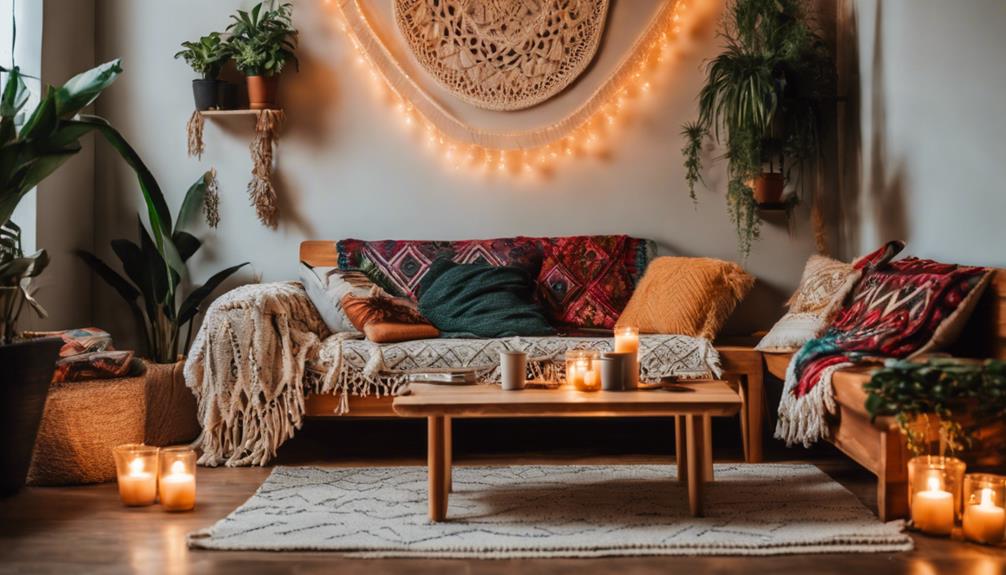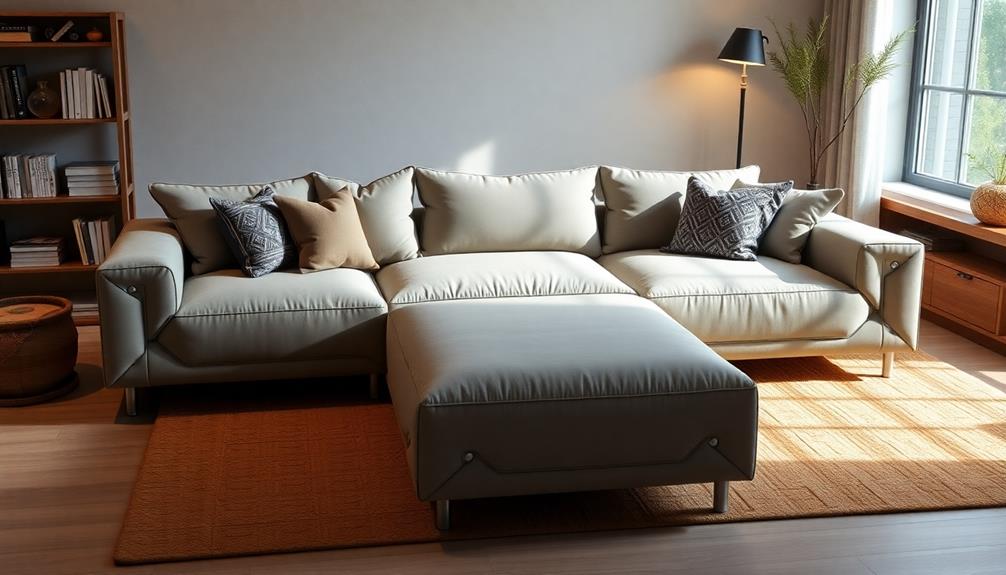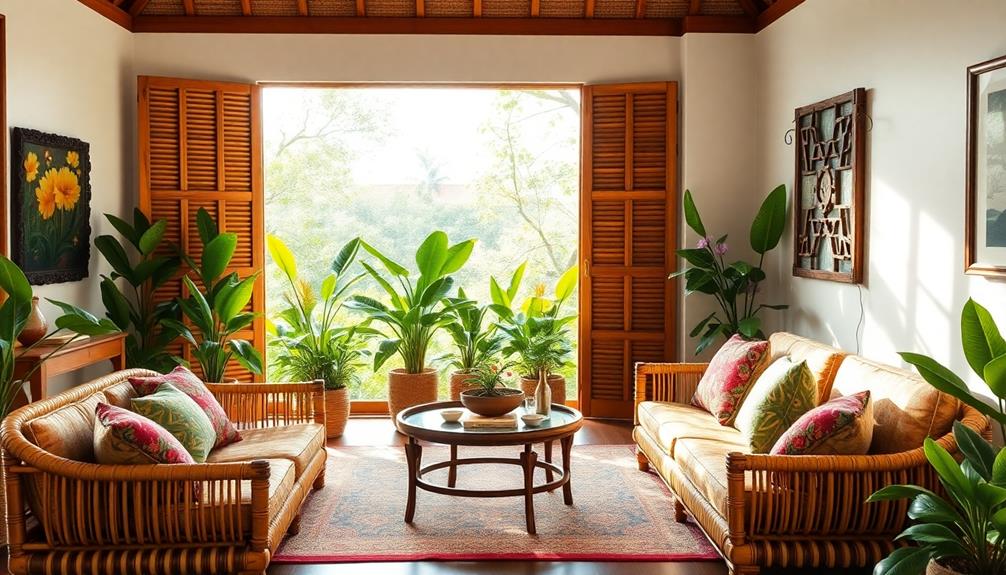To waterproof your outdoor wood furniture, you need to first clean and sand it to make sure the sealant sticks properly. Pick a sealant that matches your wood, such as polyurethane or spar urethane, both excellent at fighting off moisture and UV rays. Make sure you use thin coats, sanding lightly between each one for a stronger bond. And don’t forget to reapply the sealant every year to keep that protective layer intact. Regularly check for any signs of wear and tear, and clean off any dirt to extend the life of your furniture. If you’re curious about more ways to keep your outdoor furniture looking good, there’s a whole world of techniques and tips waiting for you to discover. Dive in and see for yourself!
Key Takeaways
- Choose the right waterproofing method, such as oils, sealants, or varnishes, based on your furniture's needs and environmental conditions.
- Prepare the wood surface by thoroughly cleaning and sanding to ensure proper adhesion of the sealant.
- Apply multiple coats of sealant, following the wood grain, and lightly sand between layers for optimal results.
- Perform regular maintenance, including annual resealing and seasonal inspections, to extend the lifespan of your outdoor furniture.
- Avoid common mistakes like skipping surface prep, using the wrong sealant, or neglecting to reapply coatings annually.
Importance of Waterproofing Outdoor Furniture
When it comes to outdoor furniture, waterproofing isn't just a suggestion—it's a necessity. If you want your furniture to last, you need to protect it from moisture that can lead to mold, mildew, and rot.
These issues not only diminish the aesthetic appeal but also compromise the structural integrity of your pieces. By investing in proper waterproofing, you can guarantee your outdoor furniture withstands harsh weather conditions, preventing warping and discoloration.
Additionally, financial considerations for elderly care may be influenced by the longevity of your investments, such as outdoor furniture. Regular maintenance plays a vital role in safeguarding your furniture.
After all, neglecting waterproofing can result in costly repairs or even replacements down the line. By applying waterproof treatments, you maintain the protective properties that keep your furniture ready for immediate use, even after adverse weather.
Additionally, waterproofing protects against harmful UV rays that can fade and damage materials over time.
Ultimately, waterproofing greatly extends the lifespan of your outdoor furniture, enhancing its usability for entertaining throughout the year.
Don't overlook this essential step—your investment deserves the best care to remain functional and beautiful for years to come.
Types of Waterproofing Methods
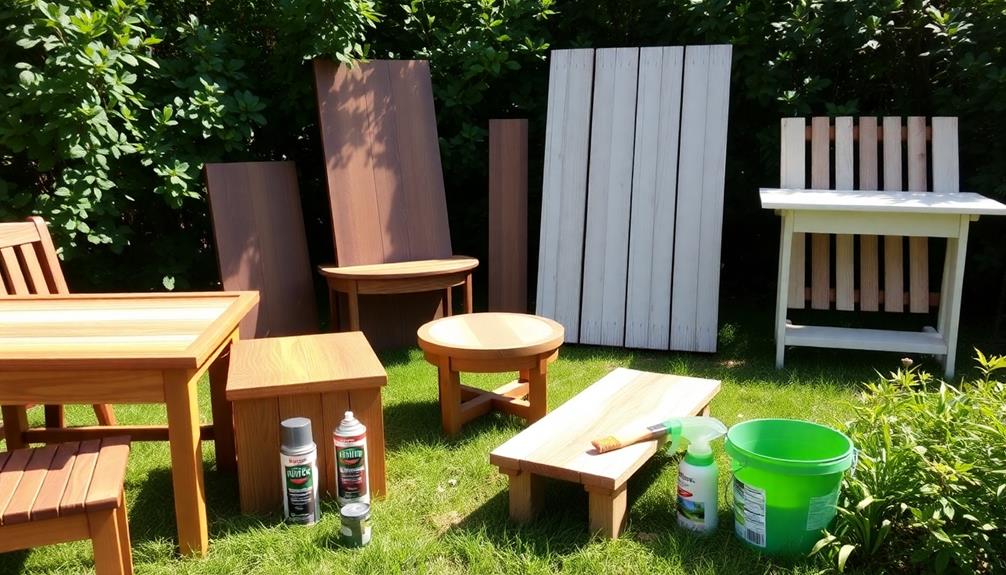
When it comes to waterproofing your outdoor wood furniture, you've got several effective options to evaluate.
A thorough understanding of different business development strategies is essential for selecting the most suitable method.
You can choose from finishes like natural oils, sealants, and varnishes, each offering unique benefits for protecting your pieces.
Understanding these methods will help you select the right approach for your specific needs.
Finishes for Wood Protection
Protecting your wood furniture from the elements is essential to guarantee its longevity and beauty. When considering finishes for wood protection, you'll find several effective waterproofing methods to keep in mind.
| Finish Type | Benefits | Considerations |
|---|---|---|
| Linseed Oil | Deep penetration, enhances color | May yellow lighter woods |
| Polyurethane | Excellent moisture & UV protection | Requires multiple coats |
| Stain and Sealer | Color enhancement + waterproofing | Best for decks & furniture |
| Spar Urethane | Robust outdoor protection | Ideal for harsh environments |
| Varnish/Lacquer | Durable finish | May require professional help |
For outdoor furniture, using a sealant like polyurethane or spar urethane provides long-lasting moisture resistance. Stain and sealer combinations not only beautify the wood but also offer effective weatherproofing. Regular maintenance is vital—reapplying your chosen waterproofing method annually will help prevent issues like warping and rotting. Keep your wood furniture looking great and standing strong against the elements with the right finishes!
Natural Oil Treatments
Natural oil treatments are a popular choice for waterproofing wood furniture, offering a range of benefits that enhance both protection and appearance.
These natural oils, like linseed oil and tung oil, penetrate deeply into the wood, creating a water-resistant barrier while preserving its natural texture.
Additionally, using high-quality oils can improve the furniture's longevity and resistance against seasonal changes, similar to how best outdoor ceiling fans are designed for durability in various weather conditions.
When choosing a natural oil for your outdoor furniture, consider the following options:
- Tung oil: Dries quickly, non-toxic, and provides excellent moisture resistance, allowing wood to expand and contract without damage.
- Linseed oil: Effective for darker woods but may yellow lighter woods like pine over time.
- Danish oil: Combines water resistance with a hard finish, making it safe for use on furniture that may contact food or children.
- Regular re-treatment: Crucial every 6 months to a year to maintain protective qualities and guarantee long-lasting durability against outdoor elements.
Sealants and Varnishes
While natural oil treatments offer a great start for waterproofing outdoor furniture, sealants and varnishes take protection to the next level. Sealants like polyurethane and spar urethane are particularly effective, providing outstanding moisture protection and UV protection for your wood surface.
Polyurethane is known for its durability, making it an excellent choice for outdoor furniture exposed to the elements. Spar urethane, a specialized varnish, is marine-rated and perfect for items that face harsh weather and water exposure.
When applying these sealants, avoid shaking the container to prevent air bubbles, and aim for an application temperature between 65 to 70 degrees Fahrenheit for ideal results.
Remember, regular maintenance is key; you'll need to perform annual reapplication of your chosen sealants to guarantee ongoing protection against moisture and UV damage, especially if you live in a climate with fluctuating conditions.
If you're looking to enhance the color of your furniture while waterproofing it, consider combining stain and sealer products.
Just make sure to thoroughly clean and sand the wood surface before application to achieve the best results.
Choosing the Right Sealant
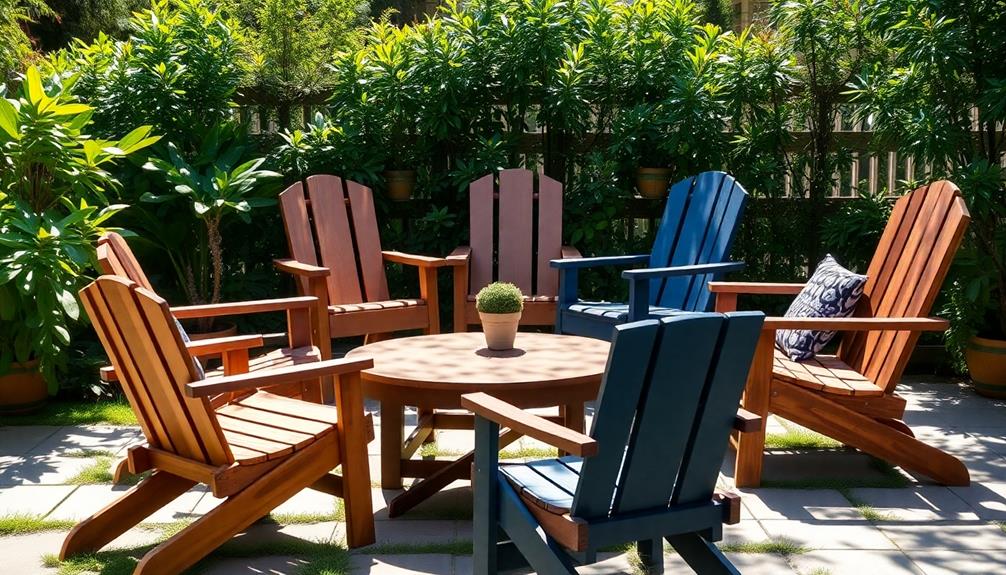
When it comes to selecting the right sealant for your outdoor wood furniture, you'll want to take into account a few key factors to ascertain durability and longevity.
The sealant you choose must offer effective moisture protection and resist UV damage, especially if your furniture will face harsh weather conditions.
Here are some options to reflect upon:
- Spar urethane: Excellent for outdoor use, it contains UV absorbers and is water-resistant.
- Polyurethane: Available in water-based and oil-based forms, it provides robust moisture protection but requires multiple coats for ideal results.
- Teak oil or tung oil: These natural oils enhance the wood grain, penetrating deeply to offer moisture and UV resistance.
- Varnish: Be cautious, as it can yellow over time. If color preservation matters, opt for a high-quality, outdoor-rated varnish to resist discoloration.
Lastly, verify your chosen sealant is compatible with the specific type of wood you're treating.
Some woods may require different application techniques or additional preparation steps to achieve the best results.
Application Techniques for Sealants
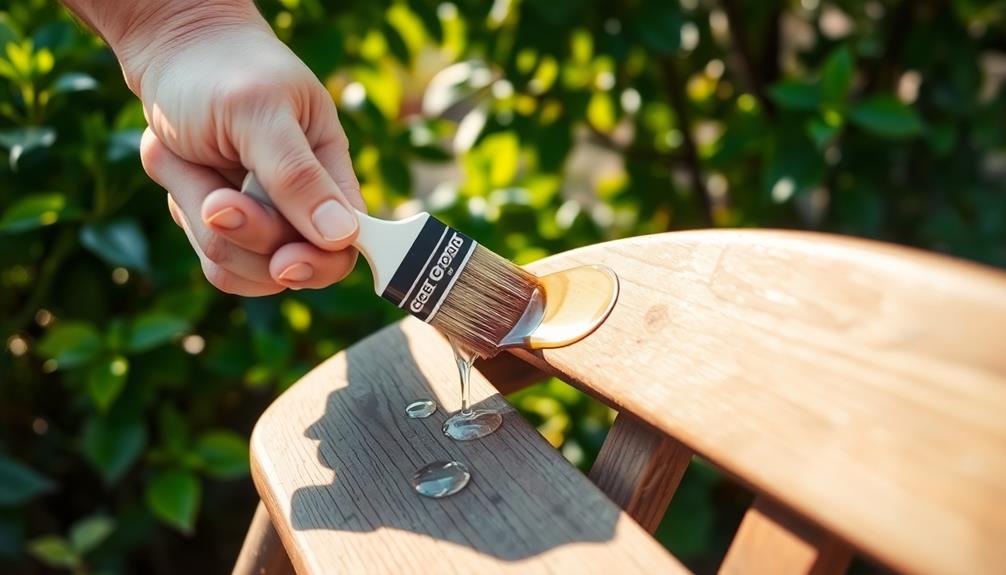
How can you guarantee a flawless application of sealants on your outdoor wood furniture? Start by thoroughly cleaning and sanding the wood surface. Use 400-grit sandpaper to open the wood grain, guaranteeing proper adhesion of the sealant.
Choose an application temperature between 60-80 degrees Fahrenheit for ideal drying and curing.
When you're ready to apply the sealant, make the first coat thinner than the subsequent ones. Use a high-quality brush or roller and follow the wood grain to avoid bubbles.
After applying the sealant, let it dry completely for 24 hours before adding additional coats. For best results, aim for 4-5 total coats of polyurethane, lightly sanding between each layer to promote better adhesion.
Once you've finished applying the sealant, use a dry cloth to wipe away any excess.
Regularly inspect your furniture and reapply the sealant annually to maintain its waterproof wood finish and protect against moisture and UV damage.
Maintenance Tips for Outdoor Furniture
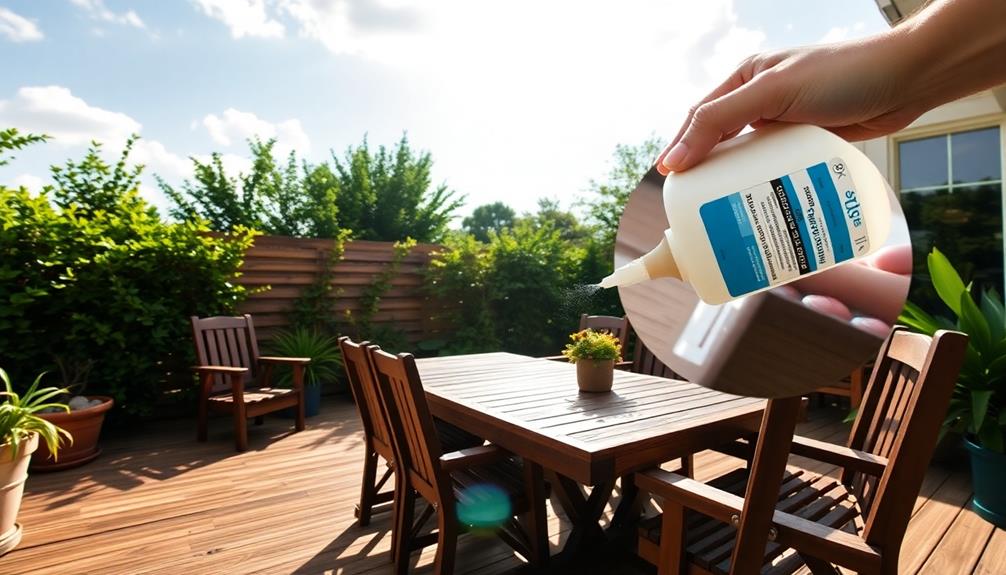
Maintaining outdoor furniture is essential to prolong its lifespan and keep it looking great. Regular maintenance not only enhances aesthetics but also prevents damage caused by the elements.
Here are some key tips to help you keep your outdoor furniture in top shape:
- Clean regularly: Use mild soap and water to remove dirt and debris. This prevents buildup that can lead to wear and deterioration.
- Inspect seasonally: Check your furniture at least once a season for signs of damage, like cracks or peeling finishes. Address any issues promptly to avoid further deterioration.
- Reseal annually: Apply appropriate outdoor sealants or protective coatings every year. This guarantees continued waterproofing and UV protection.
- Store cushions wisely: During inclement weather, store cushions and fabric items indoors. Use covers for larger pieces to prevent moisture damage.
Common Mistakes to Avoid
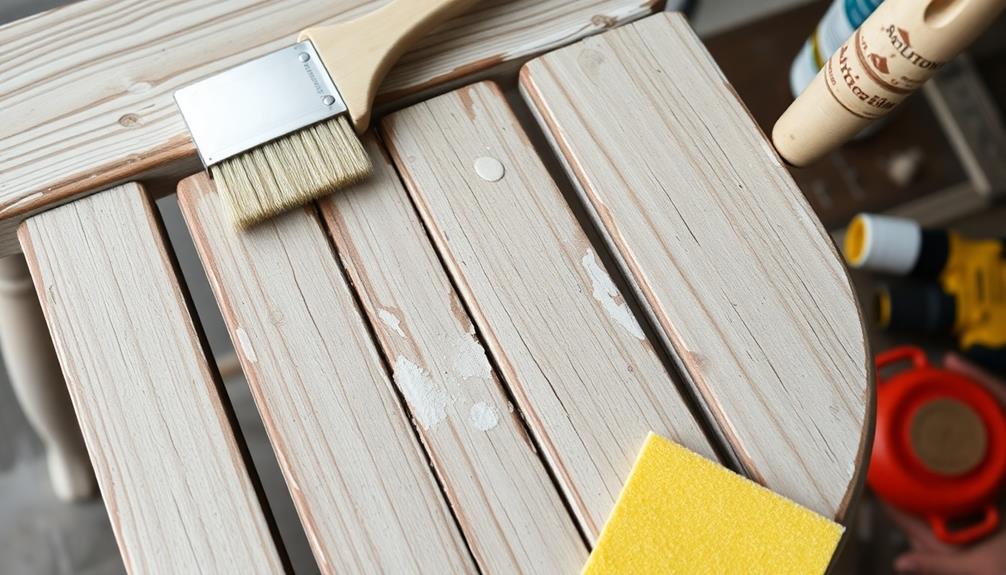
Taking care of your outdoor furniture involves more than just regular cleaning and resealing; it's also about avoiding common pitfalls that can compromise your efforts. For instance, placing your furniture in areas that receive direct sunlight for prolonged periods can lead to fading and damage over time. Additionally, caring for teak furniture requires special attention, as teak wood develops a silver patina if left untreated, and regular maintenance is needed to preserve its natural color. Using protective covers and storing your pieces during harsh weather can also extend their lifespan.
One common mistake is skipping the essential step to clean and sand the wood surface before applying sealants. This oversight can prevent proper adhesion, leading to peeling or cracking over time.
Another frequent error isn't allowing sufficient drying time between coats. Rushing this process can compromise the effectiveness of waterproofing, resulting in uneven finishes.
Additionally, many people overlook the importance of selecting the right sealant for their specific wood type and outdoor conditions. Inadequate protection against moisture and UV damage can result from this mistake.
Don't forget to reapply sealants regularly, at least once a year, as neglecting this task can lead to deterioration of the protective barrier.
Finally, be cautious when using oil-based products on light woods; these can cause unwanted yellowing that alters the wood's natural appearance.
Frequently Asked Questions
Can You Waterproof Wood Furniture for Outdoor Use?
Yes, you can waterproof wood furniture for outdoor use. Applying the right sealants, oils, or stain-sealer combinations will protect it from moisture and UV damage, ensuring it lasts longer in various weather conditions.
How Do You Permanently Waterproof Wood?
Imagine your wood absorbing rain like a thirsty sponge. To permanently waterproof it, apply marine varnish or spar urethane in multiple coats, ensuring each layer seals and protects against moisture and UV damage effectively.
How Do You Seal Wood so It Can Be Outside?
To seal wood for outdoor use, you'll clean and sand the surface, choose a suitable sealant like polyurethane, apply multiple coats, and regularly inspect it to guarantee lasting protection against moisture and UV damage.
How Do You Make Wood Furniture Last Outside?
To make wood furniture last outside, choose durable materials, apply protective sealants, clean regularly, inspect for damage, and store properly during harsh weather. With these steps, you'll guarantee longevity and maintain its beauty for years.
Conclusion
Waterproofing your outdoor wood furniture might seem like a hassle, but it's a small effort for big rewards. By taking the time to seal your furniture, you'll protect it from moisture, mold, and decay, ensuring it looks great for years. Plus, with the right products and techniques, it's easier than you think! Don't let the fear of maintenance hold you back; invest a little time now to enjoy your outdoor space worry-free later.
